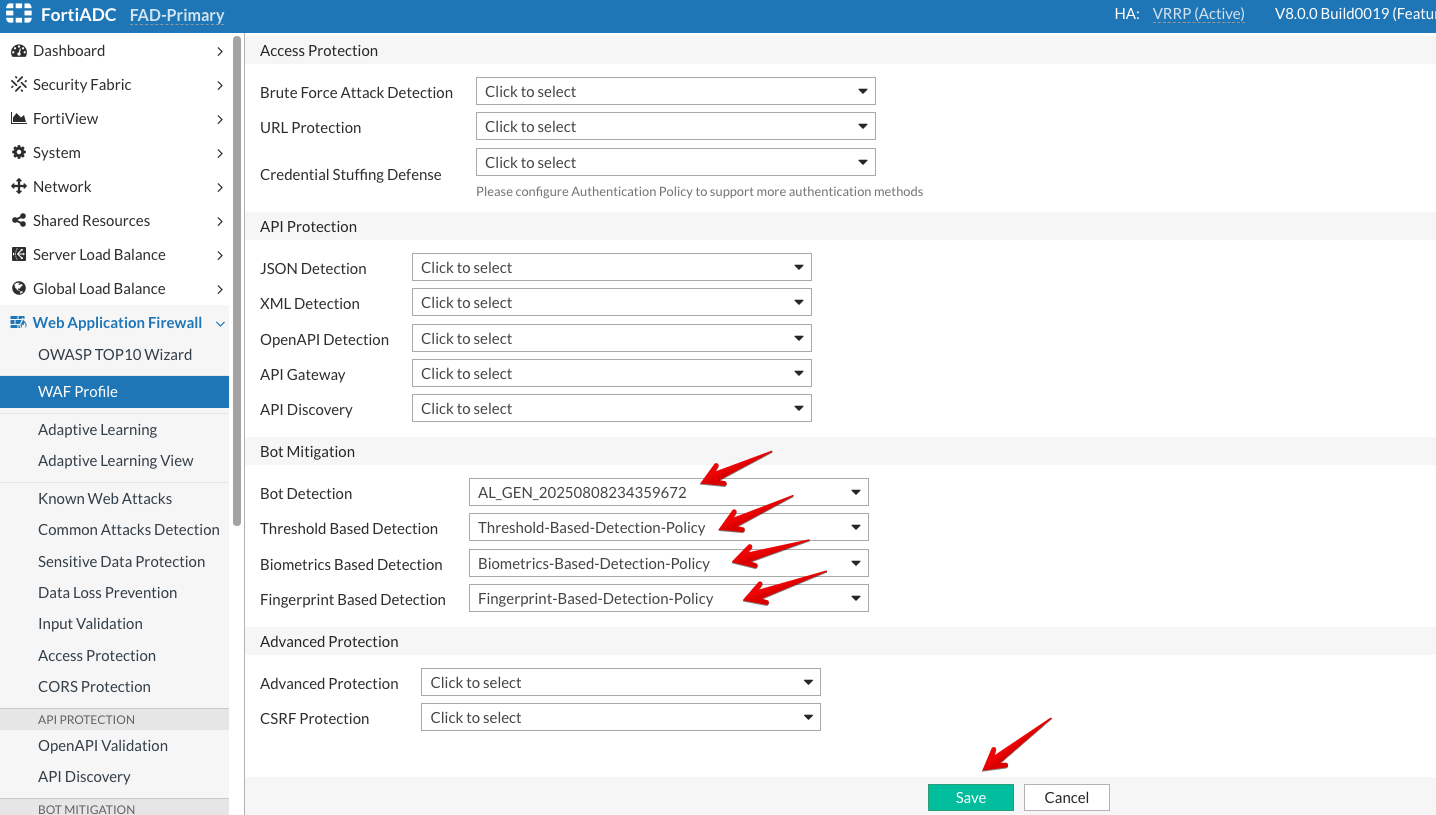Bot Mitigation
Bot Mitigation
For this section, we will focus on following Bot Mitigation modules of FortiADC’s Web Application Firewall to protect webservers from Bot automated attacks:
- Configuring a Bot Detection Policy
- Configuring a Threshold Based Detection Policy
- Configuring a Biometrics Based Detection Policy
- Configuring a Fingerprint Based Detection Policy
Configuring a Bot Detection Policy
Bot Detection policies employ signature based analysis and behavioral tracking to identify client traffic likely generated by automated bots rather than genuine human users. Legitimate bots, such as search engine crawlers, are classified as “good bots” because they perform essential search indexing operations, which can increase the visibility of your site to legitimate users.
Conversely, “bad bots” are known to generate malicious traffic that can compromise site availability and integrity. Examples of such activities include Distributed Denial of Service (DDoS) attacks and content scraping. To mitigate these threats, it is crucial to deploy effective bot mitigation strategies, such as IP reputation analysis, rate limiting, anomaly detection algorithms, and CAPTCHA challenges, to identify and block these harmful bots in real-time.
Login to the FortiADC (FAD-Primary) with the username
xperts2025and passwordAppSec-Xp3rts2025!Go to Web Application Firewall → Bot Detection
You will notice that once we accepted the recommendations from Adaptive Learning, it was automatically added to Bot Detection module so we don’t need to create a new one.
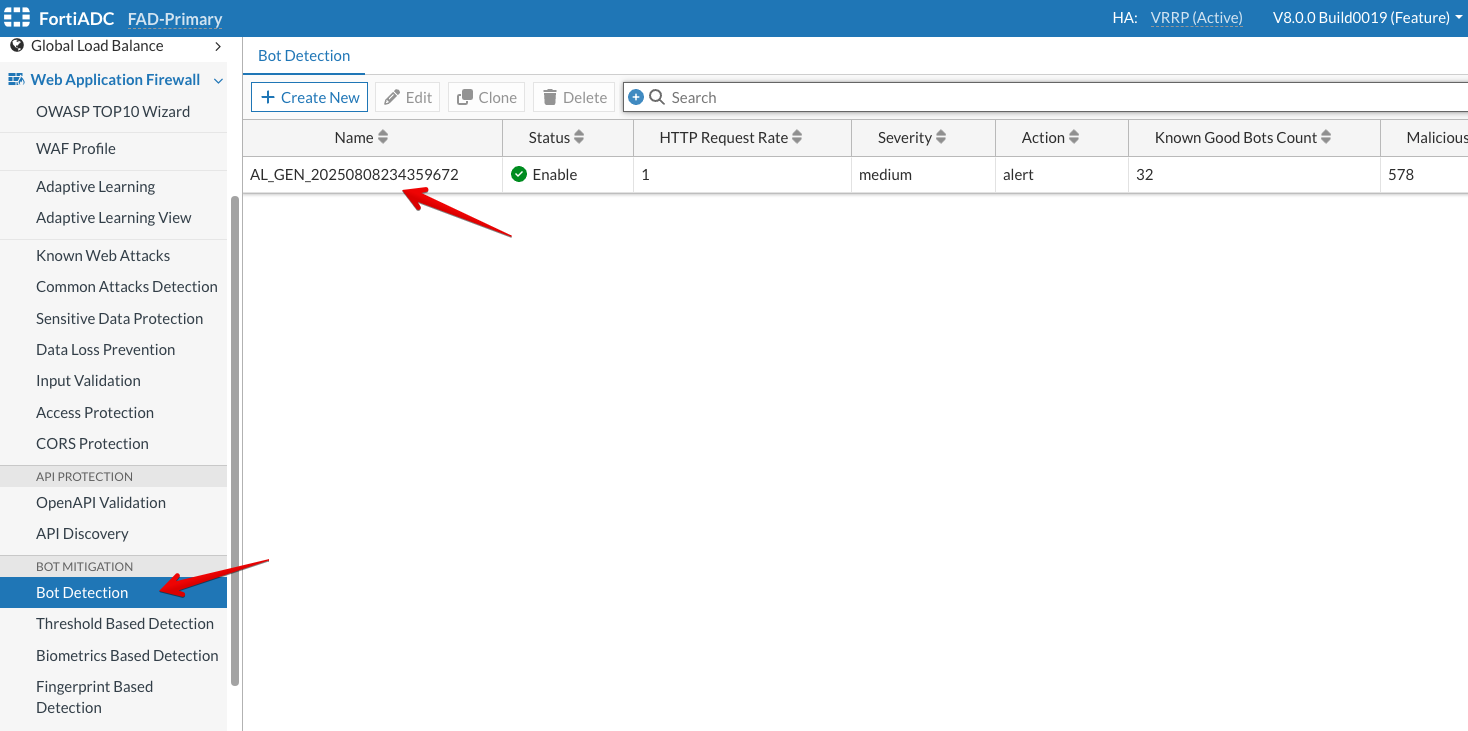
Configuring a Threshold Based Detection Policy
- Go to Web Application Firewall → Threshold Based Detection policy
- You will notice several policies which come default with the FortiADC. You can use these but you cannot customize them. So, we will create a new one below.
- Click on +Create New
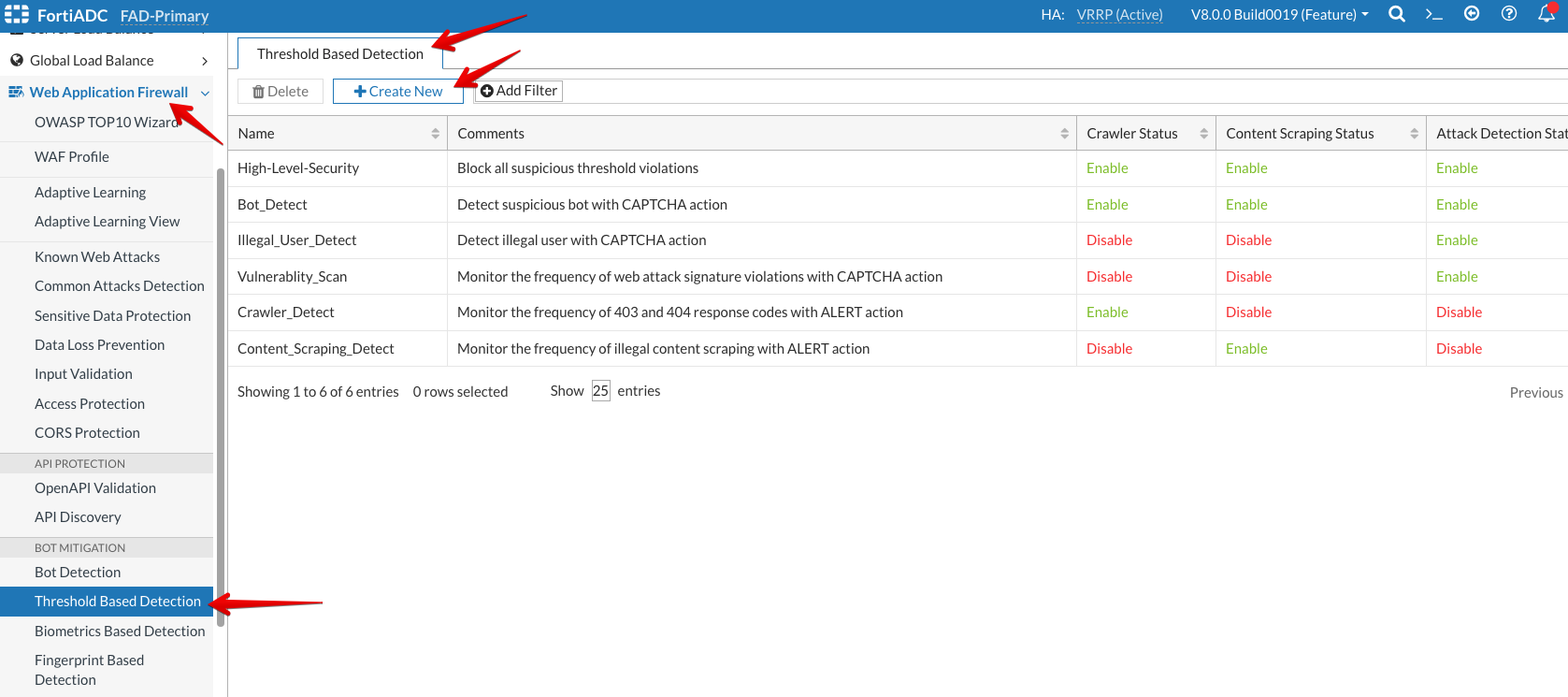
Name:
Threshold-Based-Detection-PolicyEnable the toggle for Crawler Status
Response Code:
403,404Keep everything default under Crawler Status
Enable the toggle for Content Scraping Status
Select all under Content Type
Keep everything default under Crawler Scraping Status
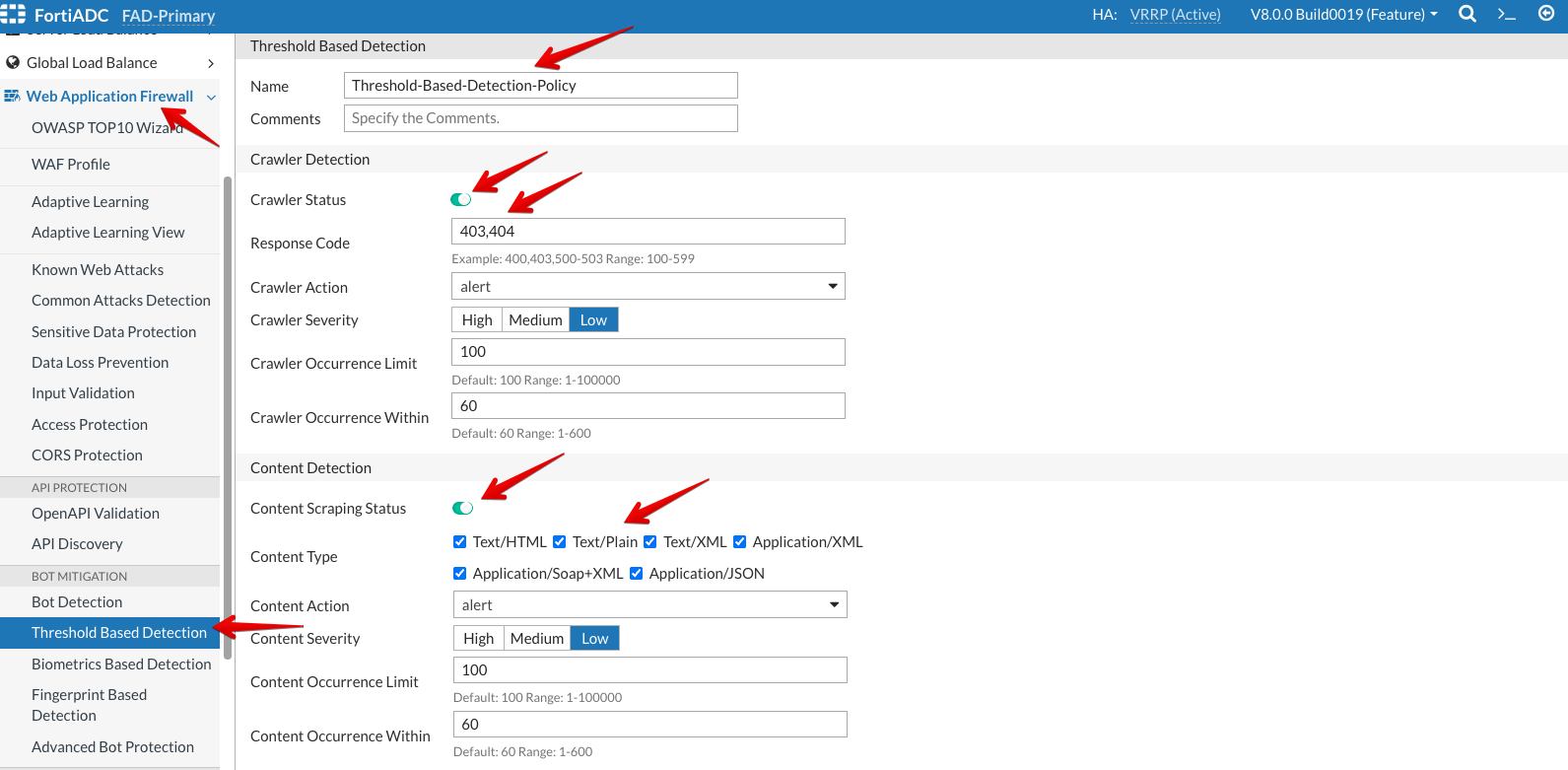
- Enable the toggle for Attack Detection Status
- Select all under Attack Modules
- Keep everything default under Attack Detection
- Click Save
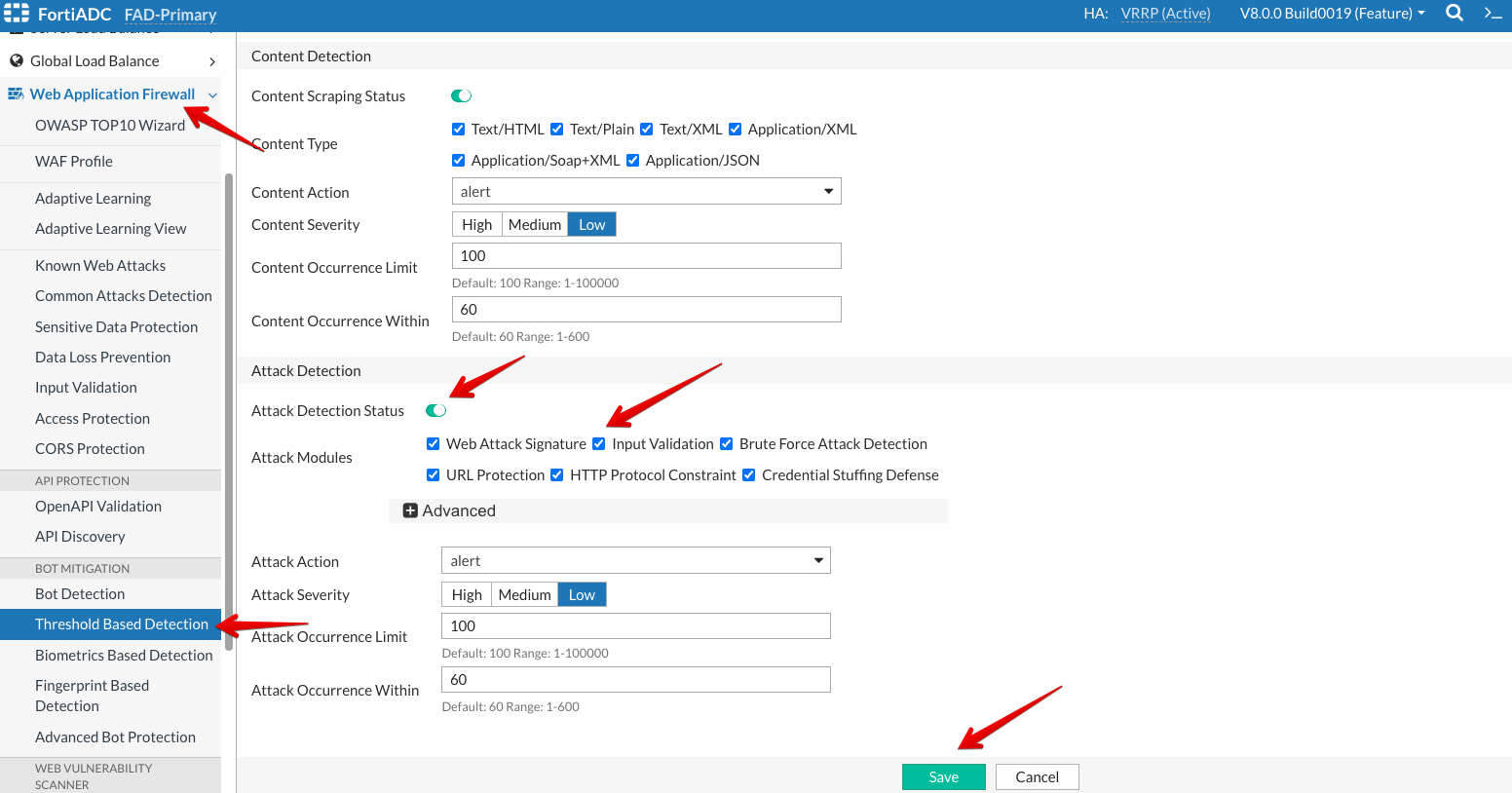
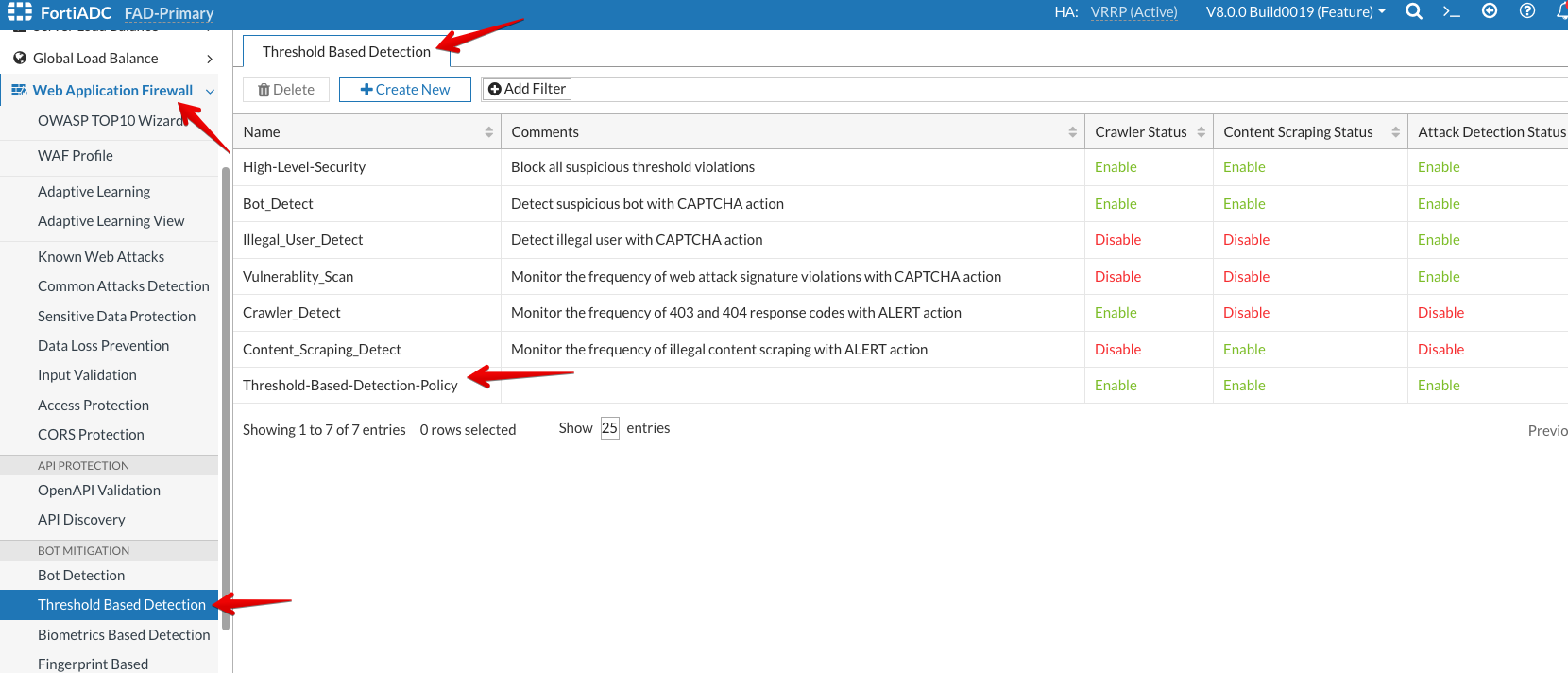
Configuring a Biometrics Based Detection Policy
- Go to Web Application Firewall → Biometrics Based Detection
- Click on +Create New
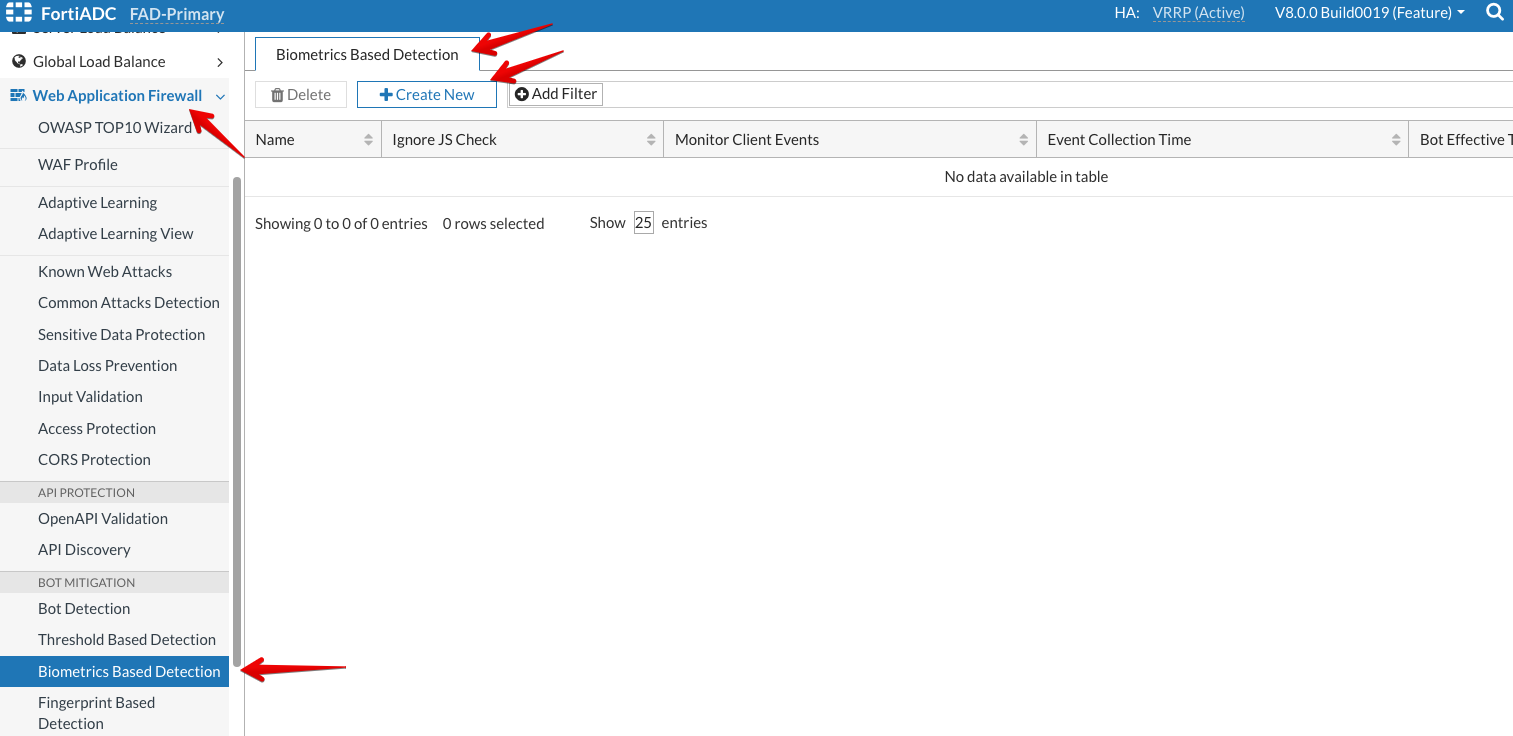
- Name:
Biometrics-Based-Detection-Policy - Keep everything default.
- Click Save
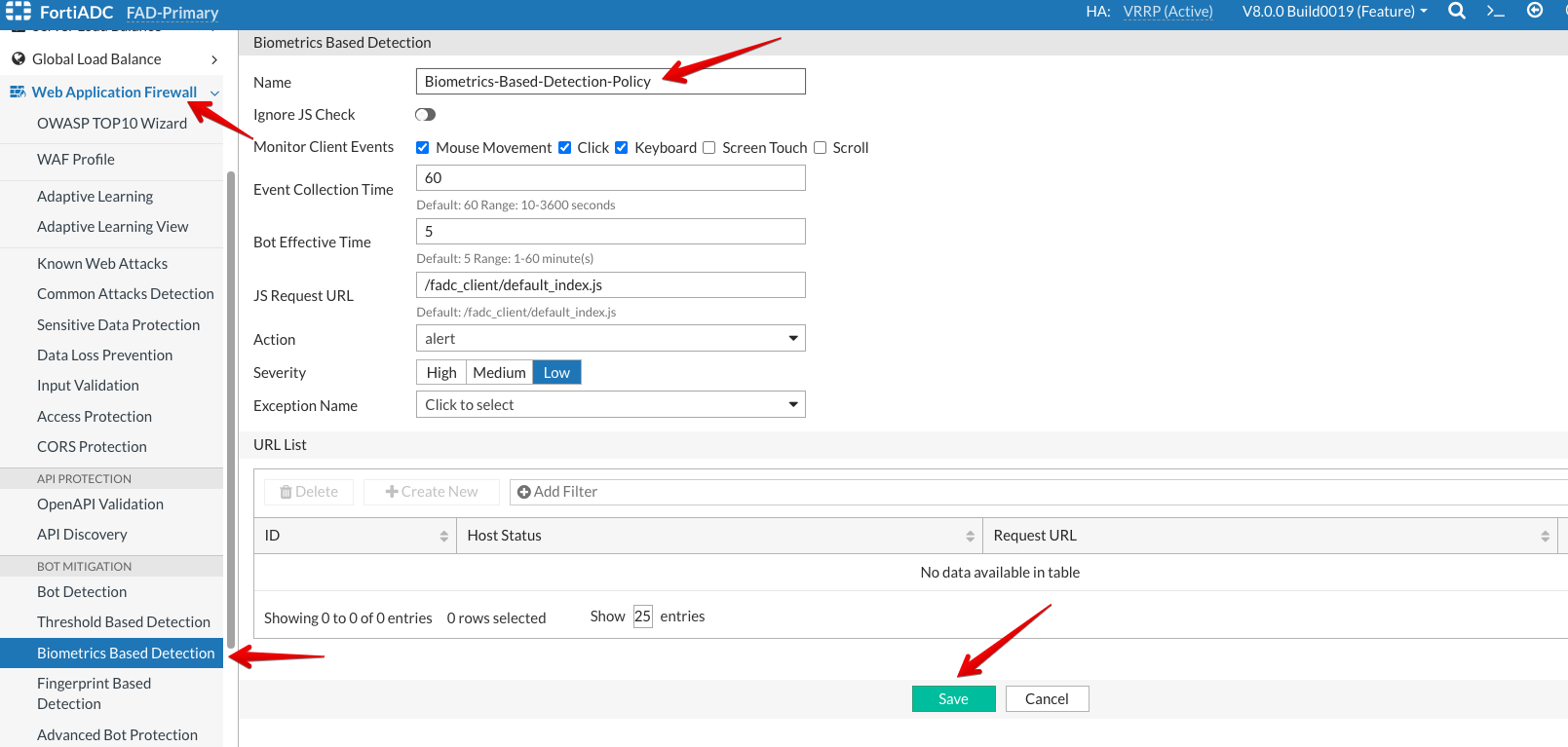
- Click on +Create New
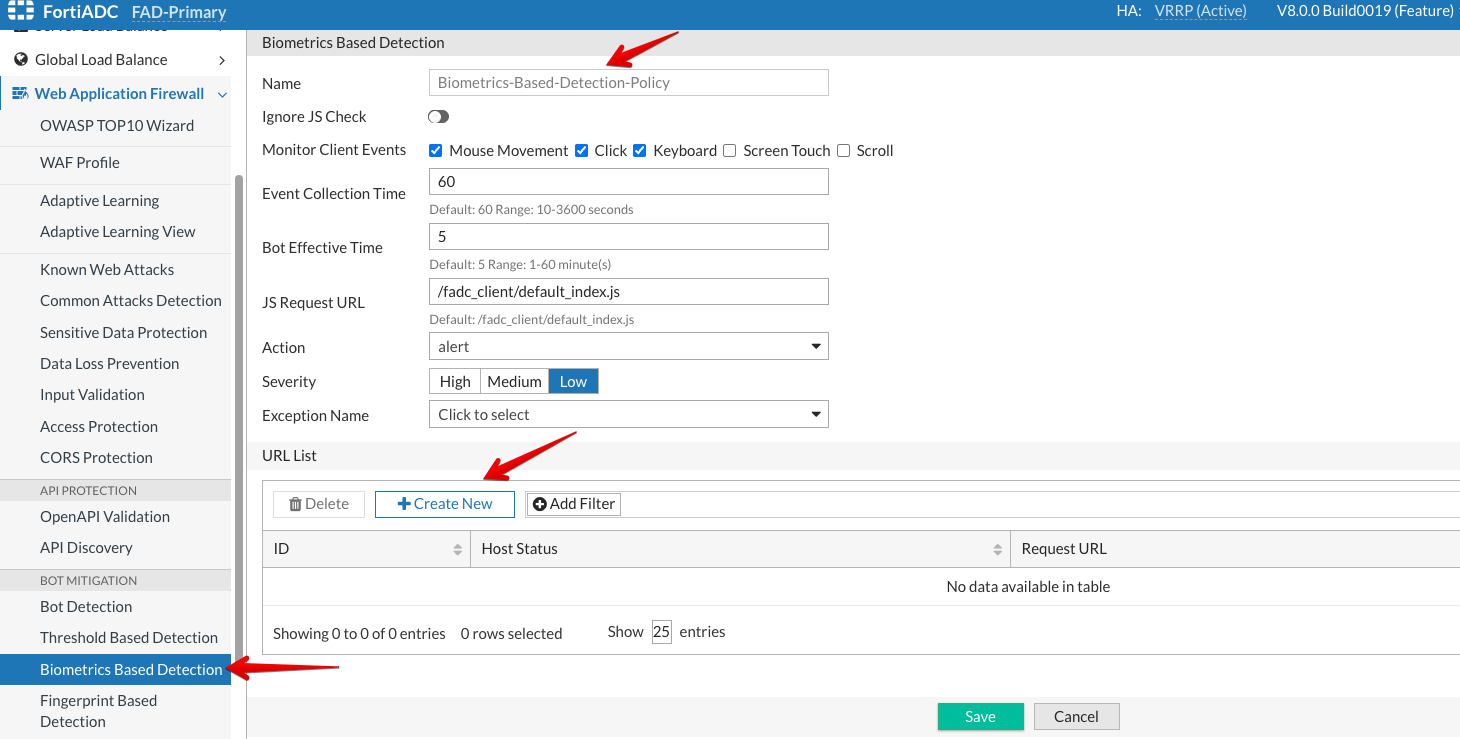
- Under Request URL, type
/.* - Click Save
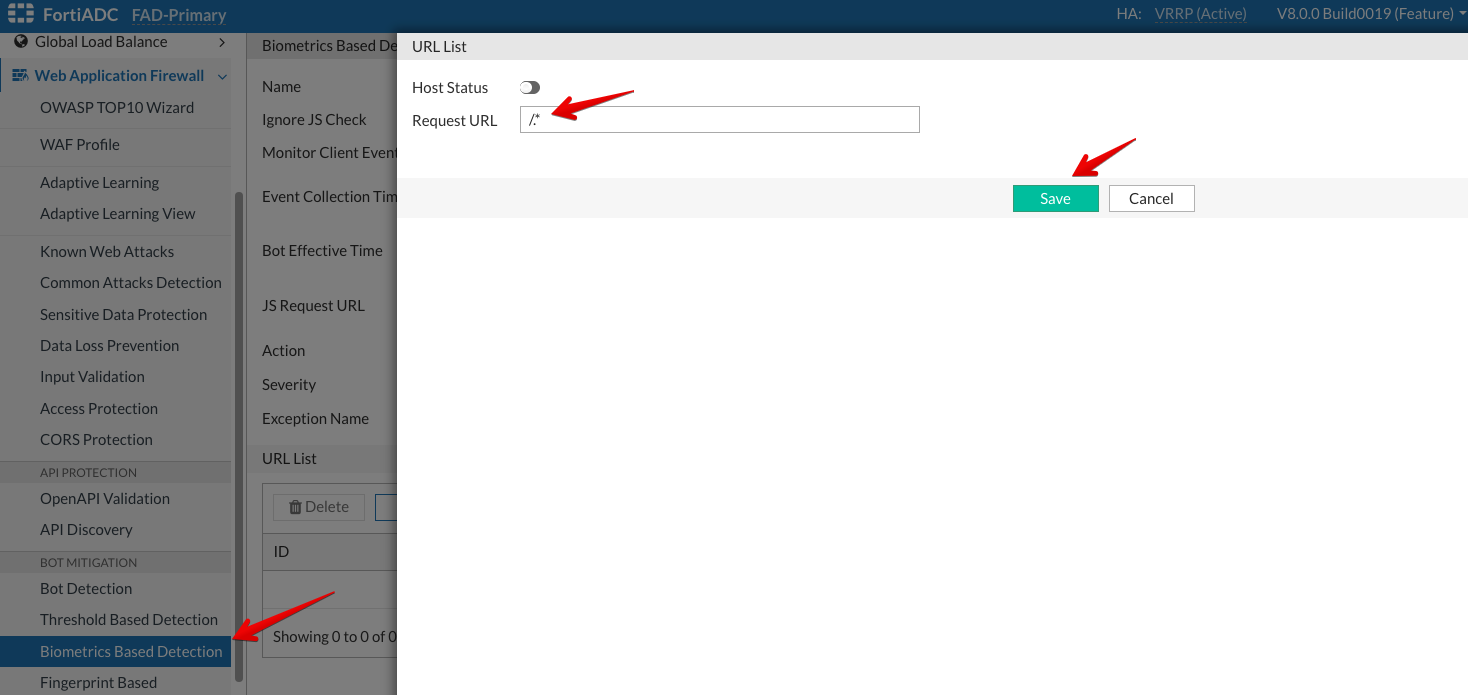
- Click Save once more.
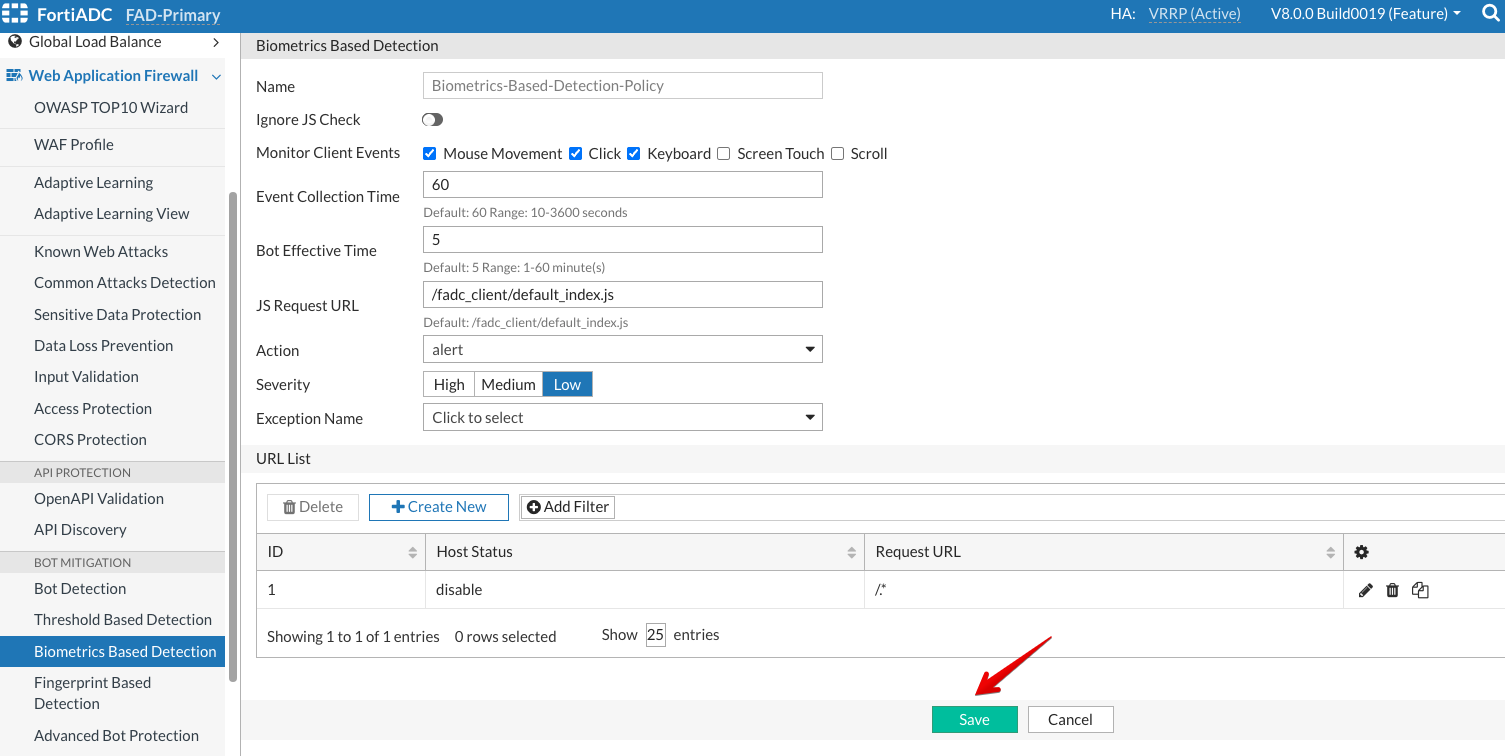
Configuring a Fingerprint Based Detection Policy
- Go to Web Application Firewall → Fingerprint Based Detection Policy
- Click on +Create New
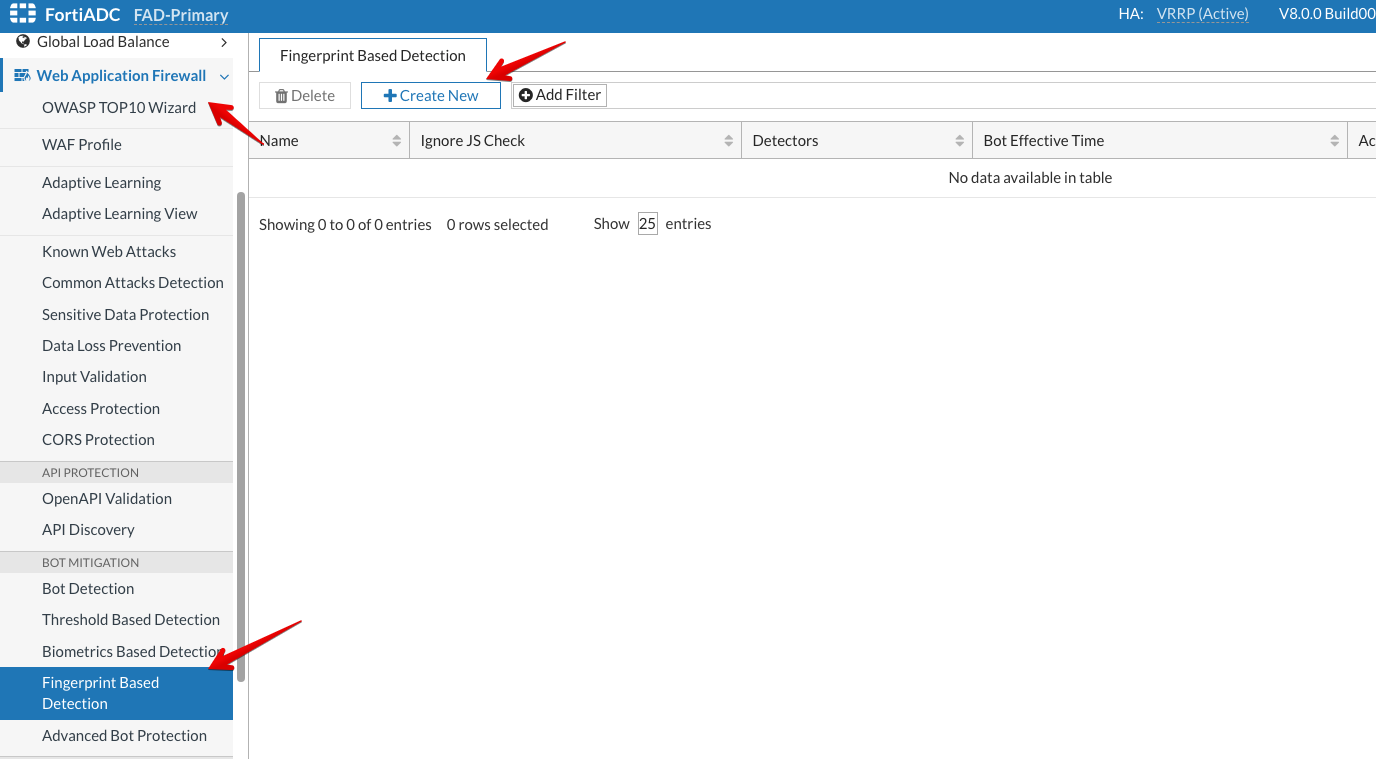
- Name:
Fingerprint-Based-Detection-Policy - Keep everything default.
- Click Save
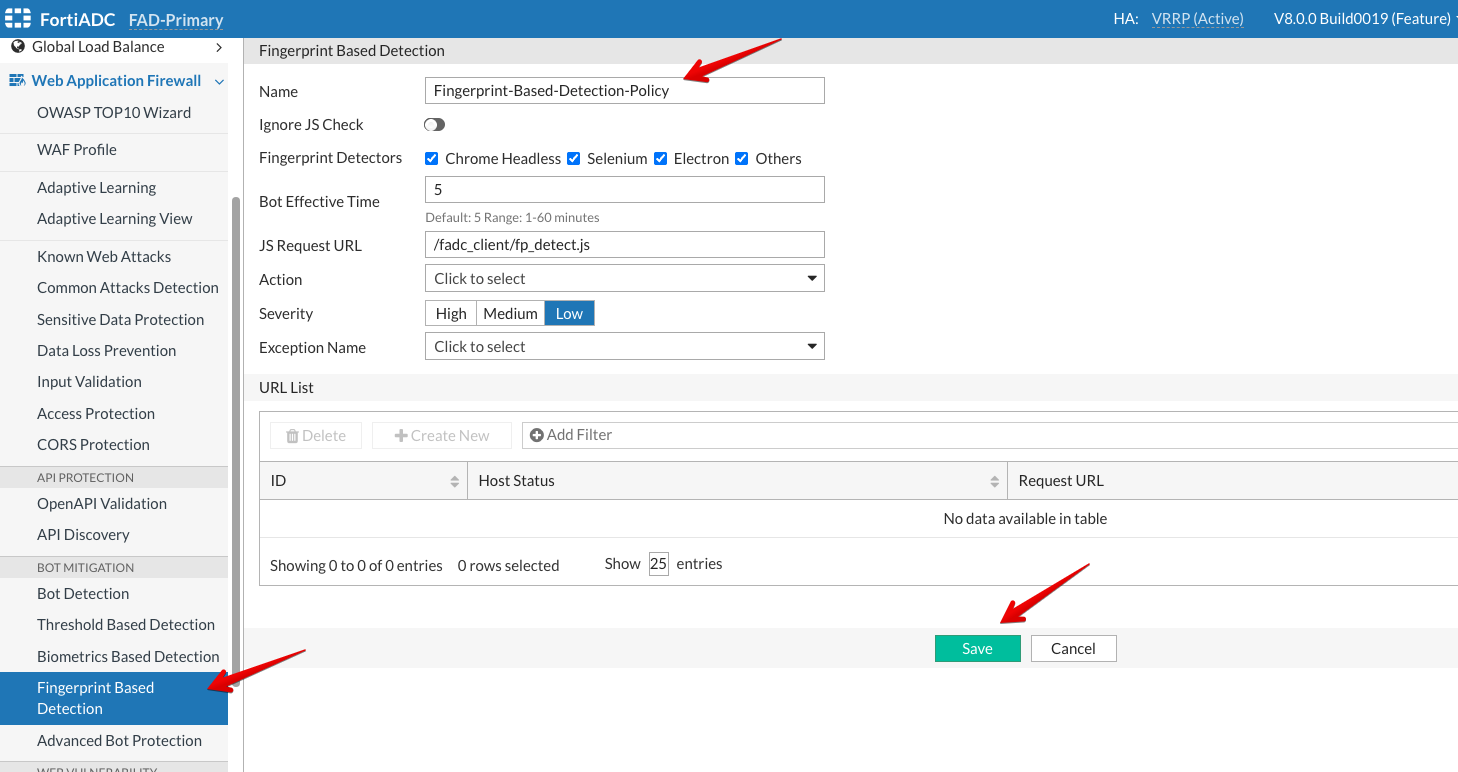
- Click on +Create New
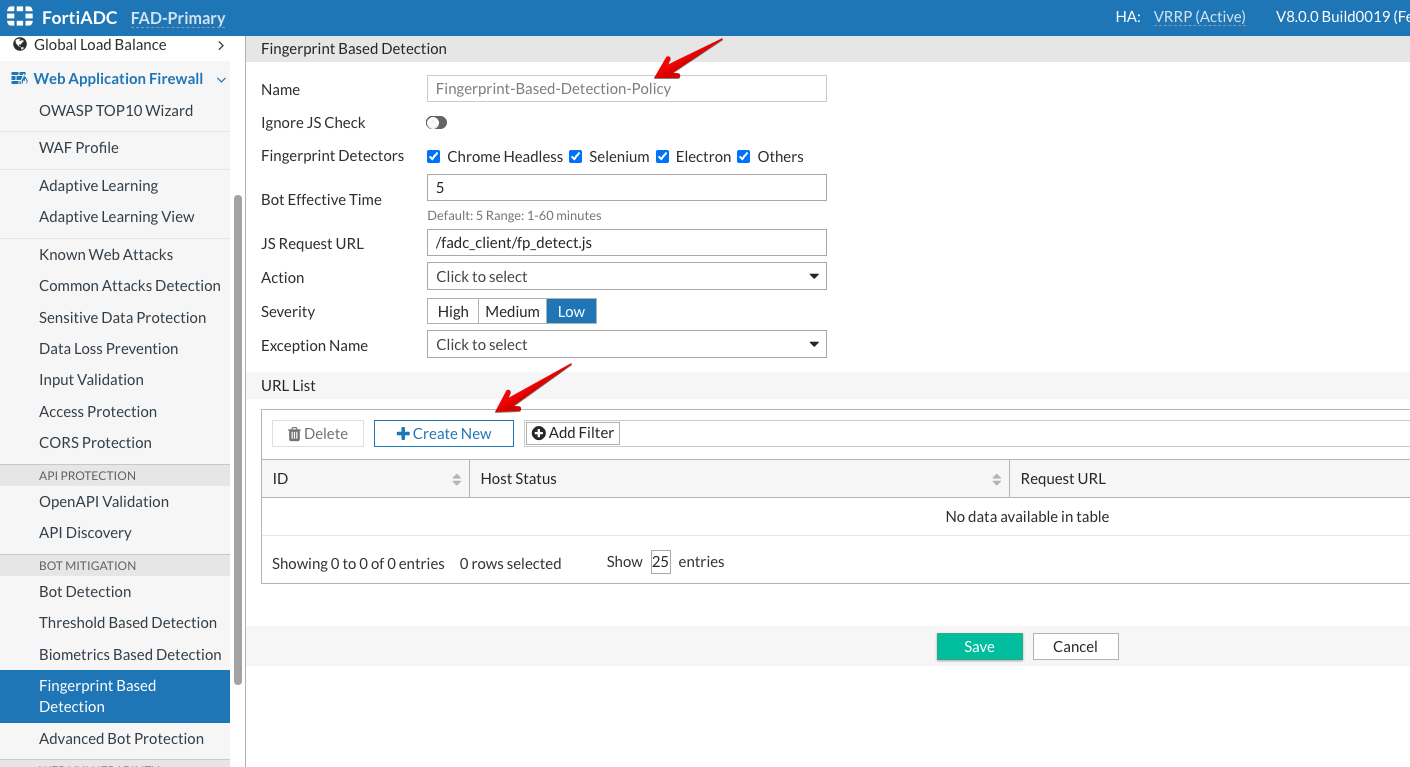
- Under Request URL, type
/.* - Click Save
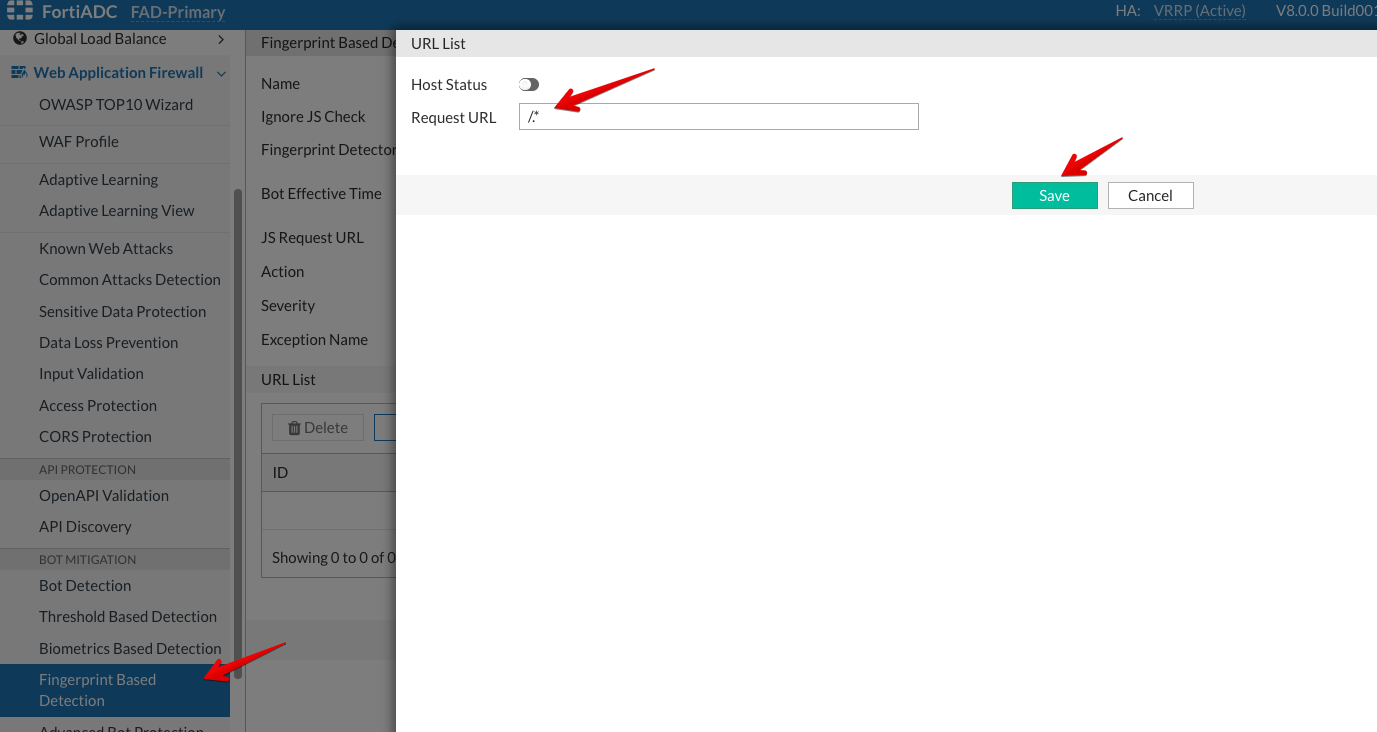
- Click Save once more.
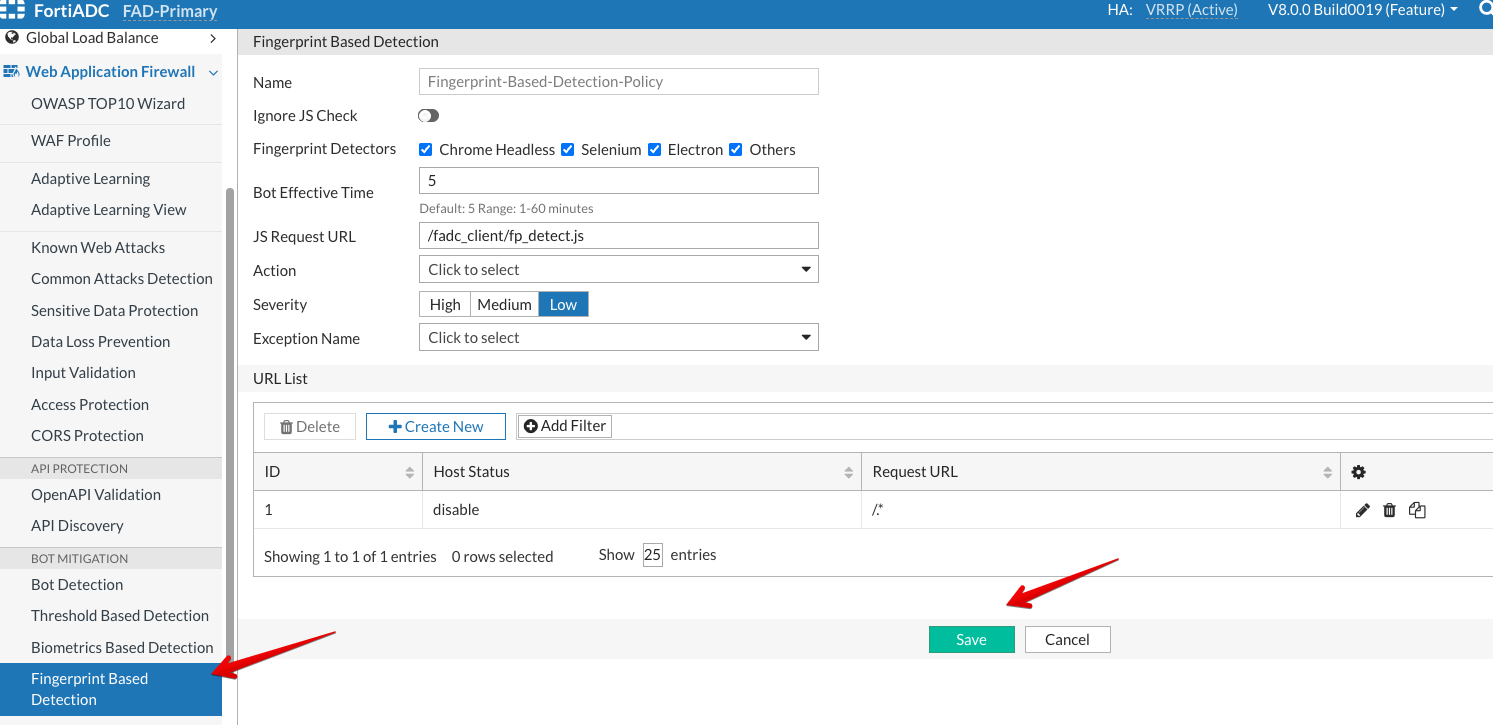
Configuring the DVWA WAF Profile with Bot Mitigation Modules
- Now, we will add the Bot Mitigation Modules to the DVWA WAF Profile.
- Double click DVWA
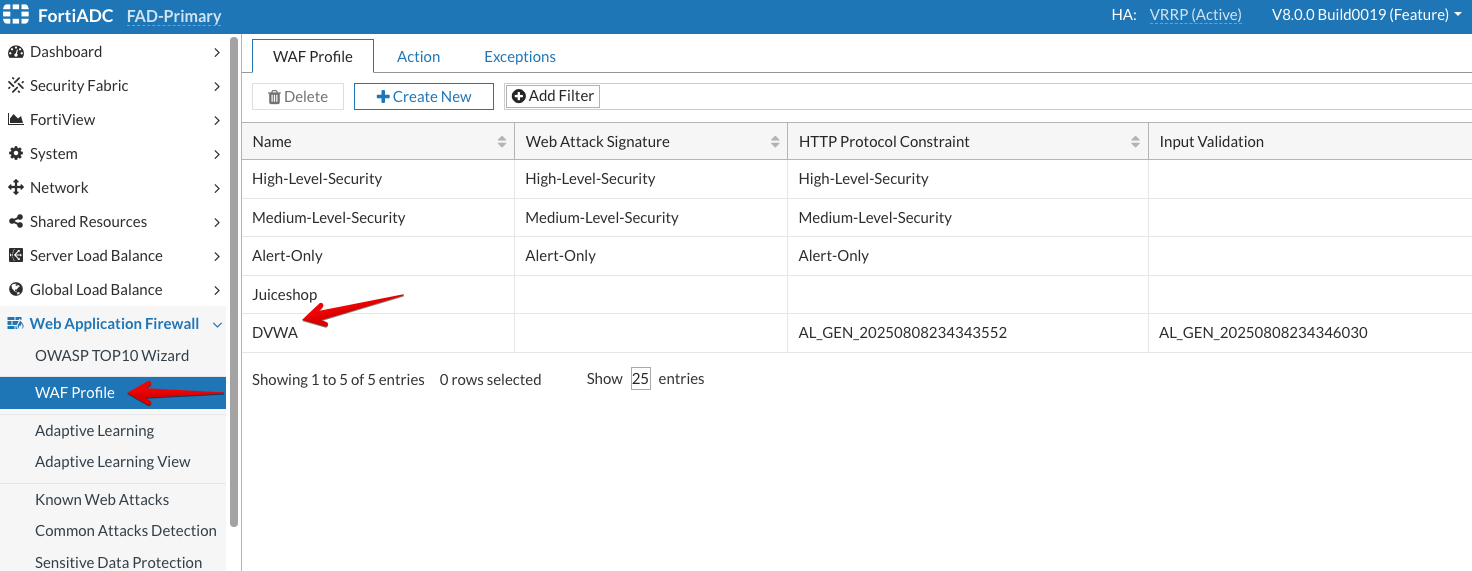
- Select the highlighted Bot Mitigation modules from their respective dropdowns and click Save.
